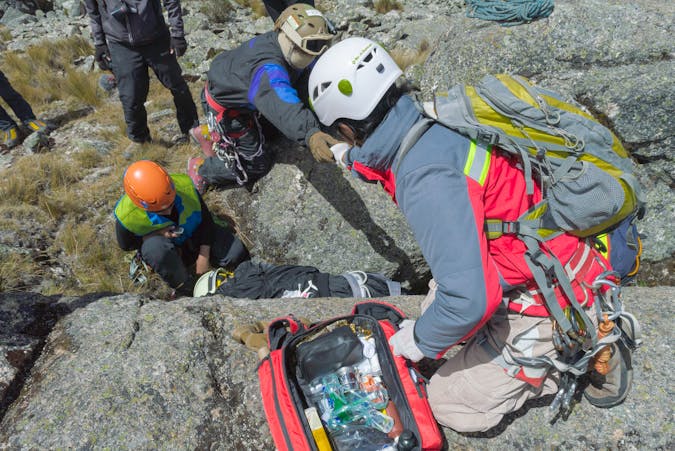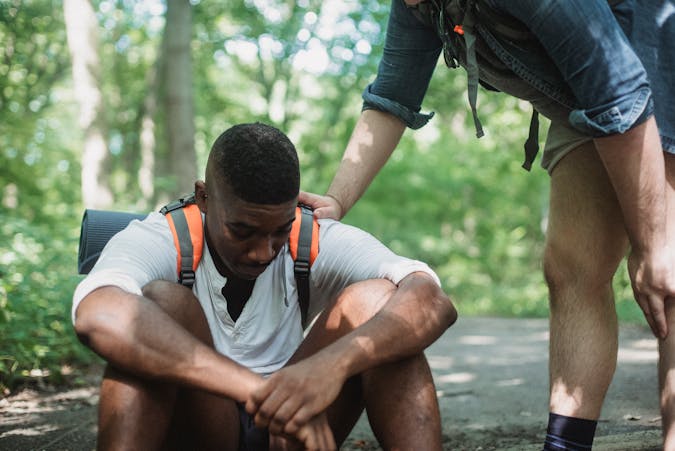
Hiking is an incredible way to get outdoors, connect with nature, and get some solid exercise. But sometimes, things can go wrong. Before hitting the trails, it’s super important to know about the common hiking injuries you might face and how to prepare for them.
Alright, let’s break it down a bit. The most frequent hiking injuries include sprained ankles, muscle strains, and dehydration. Whether you’re a newbie or experienced hiker, staying informed can be your best defense against these problems.
Preparation and awareness are your best buddies on the trail. Having a solid plan, knowing your limits, and packing necessary gear can make a world of difference. Plus, being mindful of the signs and symptoms of injuries helps you act quickly if something goes south.
Throughout this article, we’re going to dive deep into the nitty-gritty of preventing and treating hiking injuries. The goal is to equip you with all the knowledge you need to make your hikes safe and enjoyable. So, let’s get started safeguarding your hiking adventures from common mishaps!
Smart Hiking: Preventing Overexertion and Managing Body Temperature
- Knowing your limits is key to having a blast on the trail. Overexertion can lead to some nasty injuries, so it’s crucial to pace yourself. Pay attention to how you’re feeling and take breaks when you need them. Don’t push your body past its breaking point.
- Managing your body temperature is another biggie. Heat stroke, heat exhaustion, and hypothermia are no joke and can turn a fun hike into a dangerous situation. Keep an eye on the weather and dress appropriately. When it’s hot, wear light, breathable clothing, and use sunscreen. On cooler days, layer up to stay warm and dry.

Let’s talk about specific scenarios.
Heatstroke Symptoms and Treatment
If you or a friend start showing signs of heat stroke, which include:
- headache, dizziness, nausea, vomiting and confusion.
- having flushed, hot and unusually dry skin.
- being extremely thirsty.
- having a dry, swollen tongue.
- having a sudden rise in body temperature to more than 40°C or 104°F,
- being disoriented or delirious.
- slurred speech.
Stop hiking immediately, cool down, and seek medical help.
Heat Exhaustion Symptoms and Treatment
The signs of heat exhaustion include:
- headaches.
- having a raised body temperature. between 37.7 °C – 39.4°C or 100-103°F
- sweating heavily.
- fatigue, weakness, and restlessness.
- nausea and vomiting.
- weak, rapid pulse.
- poor coordination.
- anxiety.
Take a break, hydrate, and cool off till you feel better.
Hypothermia Symptoms and Treatment
The signs of hypothermia include:
- The first signs usually include feeling cold and uncontrollable shivering.
- The person may feel exhausted and their skin may be cool and pale.
- As hypothermia advances, other symptoms include, fumbling hands, unsteady gait, slurred speech, confusion and drowsiness.
- A body temp of below 32.2°C or 90°F.
If you start feeling extremely cold, confused, or your fingers go numb, it’s time to warm up ASAP. Get to a sheltered area, change into dry clothes, and get some warm fluids into you if possible. Don’t hesitate to seek medical help if things look serious.
In summary, just being smart and prepared can make a big difference. Knowing the signs of overexertion and body temperature issues, and being ready to handle them, keeps you and your hiking buddies safe and sound.
Treating Common Hiking Injuries
Even with the best preparation, injuries can happen. Knowing how to treat them on the spot can prevent minor issues from becoming major problems.
Treating a Sprained Ankle
A sprained ankle is one of the most common hiking injuries. Here are the steps to take when treating a sprained ankle.
Stop and Assess
Immediately stop hiking to prevent further damage.
- Evaluate the severity of the injury: look for swelling, bruising, and range of motion.
R.I.C.E. Method
- Rest: Avoid putting weight on the ankle. If possible, sit or find a comfortable position.
- Ice: If you have access to cold water, use a cold compress or soak a cloth in cold water and apply it to the ankle for 15-20 minutes.
- Compression: Use an elastic bandage or any fabric to wrap the ankle snugly, but not too tightly. This helps reduce swelling.
- Elevation: Raise the ankle above heart level if you’re sitting or lying down to help reduce swelling.
Pain Management
- Take over-the-counter painkillers like ibuprofen (if available) to manage pain and reduce inflammation.
Support and Protection
- If the sprain is mild, you can stabilize the ankle using a brace, wrap, or trekking pole for support. Consider creating a makeshift splint using sticks and bandages if needed.
Decide to Continue or Turn Back
- If it’s a minor sprain and you’re able to walk with support, slowly continue your hike. Use trekking poles or a sturdy stick to help with balance.
- Get a fellow hiker to carry your backpack to reduce the load on the joint.
- For severe sprains, it’s best to turn back or seek help to avoid worsening the injury.
- If support is needed use a pole on your injured side and a fellow hiker on the uninjured side.
Call for Help (if needed)
- If you can’t walk, consider calling emergency services or using a GPS device to signal for help.

Cuts and Scrapes
Cuts and scrapes are almost inevitable while hiking.
- Clean your hands.
- Stop the bleeding by applying pressure with a clean cloth or bandage.
- Once bleeding stops, gently wash the wound with clean water.
- Apply antiseptic
- Apply a sterile dressing to keep the wound clean.
I recently had an incident where an 80 year old fellow hiker tripped up on an uneven section of the trail. It was not a particularly difficult section. He fell and hit his head on a jagged rock. When he sat up he had blood pouring down his face. I sprung into action and got out my first aid kit. I always have a clean older bandage that I’m happy to use to stem the blood flow. He was conscious and able to hold the bandage to the wound to stop the blood flow. After the bleeding had stopped I inspected and cleaned the wound and bandaged it with a new bandage. He also needed a good clean up. It turned out he had taken blood thinners that morning, hence the prolific blood flow.
We stopped and rested and had our lunch before deciding to return back the way we came which was the quickest route back. We took it easy and once we arrived back to civilisation we took our patient to a medical centre where he had sticthes. It turned out he had a 7cm by 3 cm or 2.76 inches, by 1.18 inches, gash on his head. I must admit he was very tough and wouldn’t let anyone carry his backpack.
How to Treat Blisters
- Blisters can be a real pain, literally. They’re usually caused by friction, so make sure to wear well-fitted footwear and good socks. If you get one, the best move is to clean the area, apply an antiseptic, and cover it with a bandage. Avoid popping it to prevent infection.
How to Treat Bee Stings
- Bee stings can be tricky. If stung, remove the stinger as soon as possible using a scraping motion (credit cards work great). Clean the area and apply a cold pack to reduce swelling. Antihistamines can help with itching and swelling, and having an EpiPen on hand is essential if you’re allergic.
How to Treat Consussions
- Concussions are no joke. With a mild concussion, you might feel confused or have a headache. It’s best to evacuate slowly. Severe symptoms like worsening headache or dizziness require urgent evacuation and medical attention.
Taking care of these issues as they arise can save you a lot of trouble down the road.
Preventing Frequent Hiking Injuries
- Catch falls and sprains before they happen. Stay alert, especially on uneven or slippery terrain. Keep your eyes on where you’re stepping and go slow over tricky areas. If you do take a tumble, check for injuries right away.
- Warming up is a game changer. A few stretches before you hit the trail can prevent those painful muscle strains that can sneak up on you. Don’t skip it, no matter how eager you are to get going.
- Footwear can make or break your hike. Proper boots with good grip are essential. If you’re prone to ankle twists, opt for high-top boots that provide extra support. And don’t underestimate the power of good socks – they can prevent blisters and keep your feet comfy.
- Hydrate like it’s your job. Dehydration can creep up on you, causing everything from a dry mouth to serious dizziness. Drink plenty of water and bring along some with electrolytes for those extra-long hikes. Take regular sips rather than chugging – it’s more effective.
- Sometimes your stomach might revolt. Be mindful of what you eat before and during your hike to avoid issues. If you do experience severe vomiting or diarrhea, it might be time to cut your hike short and focus on recovery.
- Snake bites are not a common occurrance but here is a comprehensive guide on how to treat them.

Essential Preventive Measures and Preparations
- Balance and support on the trail are crucial, and trekking poles can be your best friend here. They help distribute weight evenly, reduce strain on your joints, and give you extra stability, especially on rough or steep terrain.
- First-aid kits aren’t just for show. Make sure yours is well-stocked with bandages, antiseptics, pain relievers, blister treatments, and any personal medications you might need. Check it before each hike to ensure everything is updated and in good condition.
- Protective clothing isn’t just about staying warm or keeping cool – it’s about staying safe. Wear long sleeves and pants to prevent scrapes and insect bites. A good hat can protect you from sunburn, and well-fitted, moisture-wicking clothes can keep you comfortable all day.
The key to a great hiking experience is preparation. By taking these preventive measures, you’re significantly reducing the risk of injuries and mishaps, leaving you free to soak in the beauty of nature. The effort you put into preparation is well worth it when it ensures your hikes are safe and enjoyable. Happy Hiking!
Do you have a hiking injury experience, or a question you would like to ask me? You can do so below.

Hi Lyn,
This was such a helpful read! My wife and I are avid hikers, though we usually stick to short day trips. I have to say, as we’ve gotten older (we’re both in our 50s), the fear of a major injury like a sprain or worse is always in the back of my mind. I really appreciated your tip on the R.I.C.E. method—it’s such a simple, easy-to-remember technique that I know will come in handy. I tend to anticipate cuts and bruises, but a major sprain is definitely something I worry about at my age.
Also, I’ve always had an irrational fear of getting bitten by a snake, so your link to the treatment guide was a nice addition. It really helped ease my fear by putting things into perspective, especially knowing it doesn’t happen often. It’s comforting to have that knowledge handy just in case!
Thank you for such a well-rounded post, and I’m looking forward to your future content. Keep up the great work!
Best,
Opa